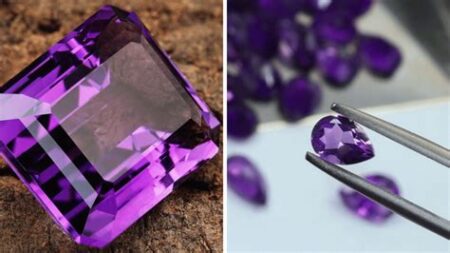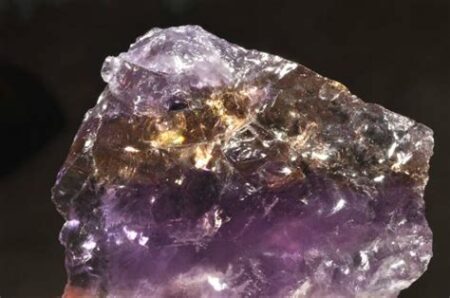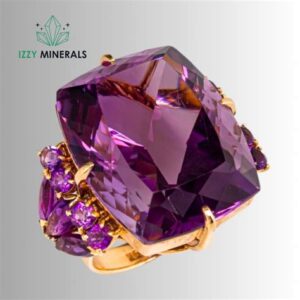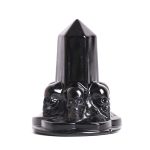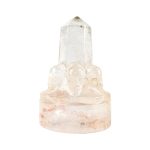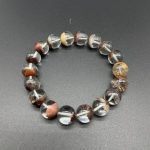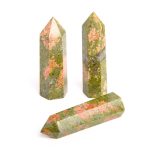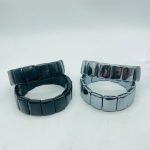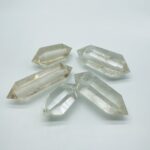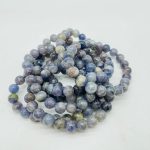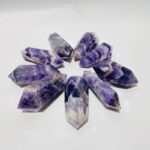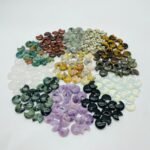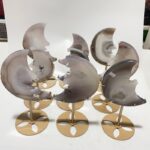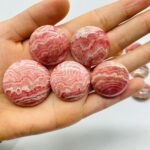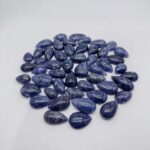Crystals, mesmerizing natural wonders, have captivated humanity for centuries. Their unique beauty, energy, and purported healing properties have made them highly sought after by collectors, spiritualists, and healers alike. However, identifying crystals accurately can be a daunting task, especially given the vast array of minerals and gemstones available. This comprehensive guide will equip you with the knowledge and techniques to confidently identify crystals, unlocking their secrets and maximizing their potential.

Key Characteristics of Crystals
Crystals are distinguished by their unique properties, which include:
- Crystal System: Refers to the geometric arrangement of atoms or molecules within a crystal, such as cubic, orthorhombic, or hexagonal.
- Cleavage: The tendency of a crystal to break along specific planes, often revealing characteristic shapes.
- Hardness (Mohs’ Scale): A measure of a crystal’s resistance to scratching, ranging from 1 (softest, such as talc) to 10 (hardest, such as diamond).
- Luster: The way a crystal reflects light, described as glassy, pearly, waxy, or earthy.
- Color: Can vary greatly, influenced by the presence of impurities or structural defects.
Identifying Crystals Using Physical Properties
The following physical properties can provide valuable clues for crystal identification:
- Shape and Habit: Crystals often form in characteristic shapes, such as cubes, octahedrons, or prisms.
- Size: Can range from microscopic to massive.
- Transparency: Describes how well light passes through a crystal, categorized as transparent (allows most light), translucent (allows some light), or opaque (blocks most light).
- Fluorescence: Ability to emit light when exposed to specific wavelengths, such as ultraviolet light.
- Double Refraction: The ability of some crystals, such as calcite, to split a light beam into two.
Using Geological Tools for Identification
Geological instruments can enhance crystal identification accuracy:
- Polarizing Microscope: Illuminates crystals with polarized light, revealing optical properties that can aid in identification.
- Spectrometer: Detects and analyzes the wavelength of light emitted or absorbed by a crystal, providing chemical information.
- Refractometer: Measures the index of refraction, an optical property influenced by a crystal’s composition.
Identification Tips for Specific Minerals
To identify specific minerals, consider the following tips:
- Quartz: Abundant mineral with a vitreous luster and hardness of 7; can exhibit a wide range of colors.
- Calcite: Carbonate mineral with a rhombohedral crystal system, perfect cleavage, and a hardness of 3; often found in sedimentary rocks.
- Feldspar: Common rock-forming mineral with a hardness of 6, exhibiting striations on cleavage faces and a variety of colors.
- Pyrite: Known as “Fool’s Gold,” this iron sulfide mineral has a metallic luster and a hardness of 6; often forms cubic crystals.
- Muscovite: A mica mineral with a pearly luster and a hardness of 2-3; thin sheets can be easily peeled off.
Common Mistakes to Avoid
Identifying crystals accurately requires avoiding common pitfalls:
- Relying solely on color: While color can be a clue, variations within minerals and impurities can lead to inaccurate conclusions.
- Ignoring crystal shape: Crystals can exhibit similar shapes but differ in other properties.
- Overlooking cleavage: Specific cleavage patterns can provide important diagnostic information.
- Assuming hardness alone: Hardness is a useful indicator but should be considered in conjunction with other properties.
- Lacking geological knowledge: Understanding the geological context of crystals can aid in their identification.
Why Identification Matters
Accurately identifying crystals is crucial for several reasons:
- Scientific Research: Proper identification enables geologists and mineralogists to study crystal formation, composition, and distribution.
- Gemology: Jewelers and gemologists rely on accurate identification to classify gemstones and determine their value.
- Crystal Healing: Practitioners believe that specific crystals possess healing properties; correct identification ensures proper use.
- Feng Shui: This ancient Chinese practice harmonizes energy flow using crystals; identification ensures appropriate placement.
Benefits of Crystal Identification
Identifying crystals offers numerous benefits:
- Knowledge and Appreciation: Deepens understanding and appreciation of the natural world and its mineral diversity.
- Accurate Crystal Selection: Enables informed choices when selecting crystals for healing, meditation, or display purposes.
- Avoidance of Counterfeits: Protects against purchasing fake or mislabeled crystals.
- Historical and Cultural Significance: Reveals insights into the geological and cultural significance of crystals throughout history.
- Inspiration and Creativity: Inspires creativity and innovation when incorporating crystals into art, jewelry, or design.
Comparing Pros and Cons
| Pros | Cons |
|---|---|
| Enhanced knowledge and appreciation | Can be time-consuming and requires patience and attention to detail |
| Accurate crystal selection | Some techniques, such as spectroscopy, require specialized equipment and expertise |
| Avoidance of counterfeits | Not all crystals are easily identifiable, especially in small or altered specimens |
| Historical and cultural significance | Requires geological and mineralogical knowledge to interpret findings effectively |
| Inspiration and creativity | May require access to reference materials and expert guidance for accurate conclusions |
Table 1: Physical Properties of Common Crystals
| Mineral | Crystal System | Cleavage | Hardness | Luster | Color |
|---|---|---|---|---|---|
| Quartz | Hexagonal | Conchoidal | 7 | Vitreous | Colorless, white, pink |
| Calcite | Rhombohedral | Perfect, rhomboid | 3 | Vitreous | Colorless, white, green |
| Feldspar | Triclinic | Cleavage planes | 6 | Witreous | White, pink, orange |
| Pyrite | Cubic | None | 6 | Metallic | Golden yellow |
| Muscovite | Monoclinic | Excellent basal | 2-3 | Pearly | Colorless, white, green |
Table 2: Geological Tools for Crystal Identification
| Tool | Measurement | Application |
|---|---|---|
| Polarizing Microscope | Optical properties | Reveals interference colors, birefringence, and extinction angles |
| Spectrometer | Wavelength analysis | Detects and identifies elements and chemical compounds based on the absorption or emission of light |
| Refractometer | Index of refraction | Determines the speed at which light travels through a crystal, providing information about its density |
Table 3: Identification Tips for Specific Minerals
| Mineral | Shape and Habit | Size | Transparency | Fluorescence |
|---|---|---|---|---|
| Quartz | Hexagonal prisms or pyramids | Varies | Transparent to opaque | May exhibit phosphorescence |
| Calcite | Rhombohedral or scalenohedral | Varies | Transparent to opaque | May exhibit fluorescence |
| Feldspar | Blocky or tabular | Varies | Translucent to opaque | May exhibit fluorescence |
| Pyrite | Cubic or pyritohedral | Varies | Opaque | May exhibit weak fluorescence |
| Muscovite | Thin, flexible sheets | Varies | Transparent to translucent | May exhibit fluorescence |
Table 4: Common Mistakes to Avoid in Crystal Identification
| Mistake | Example |
|---|---|
| Relying solely on color | Green crystals may be either emerald (beryl) or peridot (olivine), despite their different compositions |
| Ignoring crystal shape | Octahedral crystals may be either diamond or cubic zirconia, despite their different hardnesses |
| Overlooking cleavage | Cleavage patterns can distinguish between calcite and dolomite, which have similar crystal systems |
| Assuming hardness alone | Talc (Mohs’ hardness of 1) and calcite (Mohs’ hardness of 3) can be scratched with a fingernail |
| Lacking geological knowledge | Identifying crystals found in sedimentary rocks may require understanding of geological processes that form them |
Conclusion
Identifying crystals is a fascinating and rewarding pursuit that requires patience, knowledge, and a keen eye. By carefully observing physical properties, using geological tools, and considering the geological context, you can confidently identify crystals, unlocking their hidden secrets and maximizing their potential. Remember, accurate identification is key to scientific research, gemology, crystal healing, Feng Shui, and countless other applications that harness the multifaceted beauty and power of these natural wonders.

